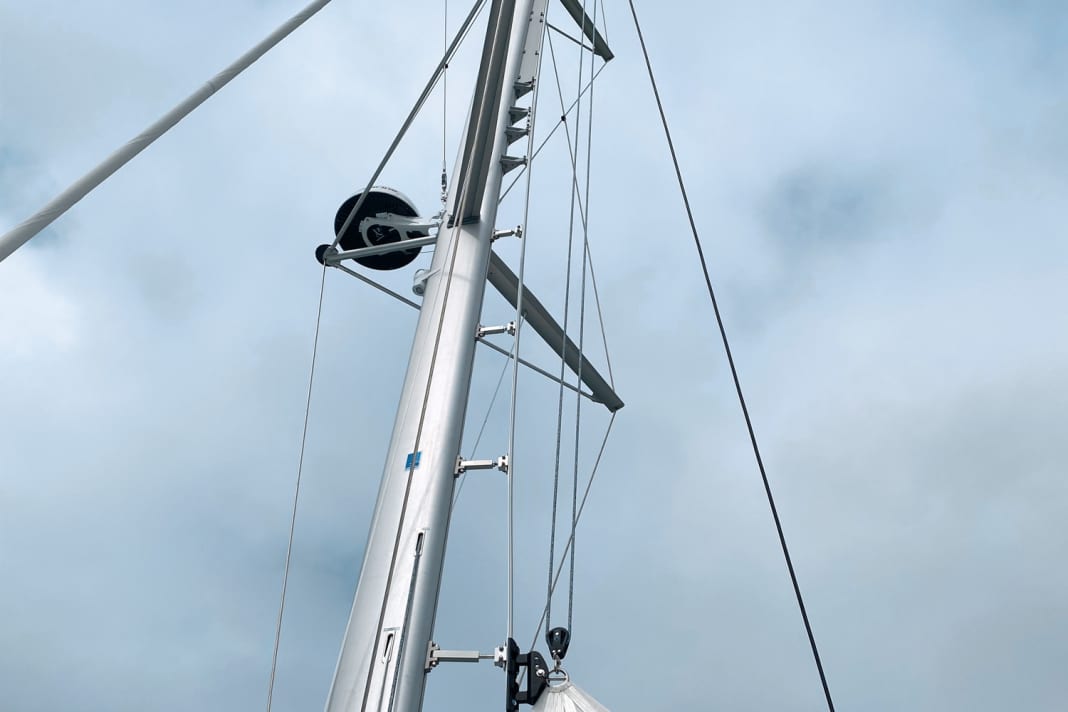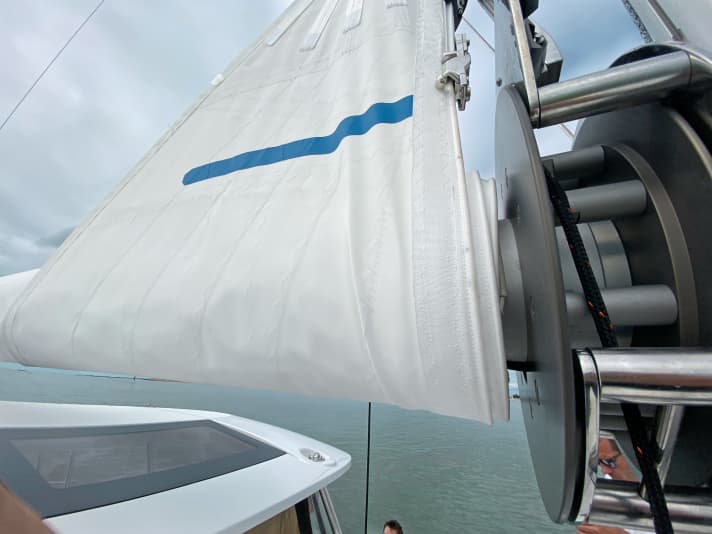





It took a long time before the system was ready for series production. "We designed the first prototypes twelve years ago," says Bruno Belmont, Head of Development at Lagoon and one of the most resourceful minds in the world of catamaran construction. "But they weren't technically good enough."
A good five years ago, Belmont and his team made the next attempt, this time with the help of competent partners. Mast builder Sparcraft and sailmaker Incidence were involved in the design. The first furling booms of today's design were rigged back in 2020 and have been extensively tested since then. Two cruising catamarans are now on long voyages with them. Series production of what observers are calling a potential game changer in the market for large multihulls is set to begin in January: the Lagoon Furling Boom.
A potential game changer in the "large multihull" market
Quentin Berault, Product Manager of the Beneteau Group brand, is convinced that the system will "greatly simplify" the setting, reefing and recovery of the mainsail. "Especially on catamarans with a flybridge," says Bruno Belmont, "the furling boom offers decisive handling advantages over conventional mainsails."
The boats get bigger, the tree grows higher and higher
In fact, the new and comparatively simple technology solves a problem that has become increasingly urgent over the past ten or 15 years. With the growth of multihulls in length, width and, above all, height, reefing has become a test of courage several metres above the sea.
The sun deck, which was often still overhung by fixed biminis, allowed the boom to reach ever new heights. Anyone who has to clear something there in choppy seas rightly feels very exposed. And so the Furling Boom addresses a problem that is quite considerable beyond 40 feet in length. How easily does the end cap of a mainsail batten get caught in the lazy bag and block the setting? How often does a line become unclear when reefing and squeeze the cloth so much that it becomes a shame and threatens to be torn in the long run?
Because more than half of the owners of large catamarans today have little or no previous experience at sea, the furling boom promises to close a safety gap. This is because nobody has to leave the flybridge cockpit to operate it. Everything needed to operate it can be done from the pair of winches mounted on the port side.
Simple sail setting with electric winch
Quentin Berault shows how it's done on a test run off La Rochelle: Bruno Belmont first turns the Lagoon 46 into the wind while Berault releases the mainsheet in order to set the mainsheet, which is clearly exposed in the top. At the stopper battery between the rudder and the winches, a white mark on the dirk shows that the boom is at the right angle. Then all it takes is a press of the switch on the electric winch, on which the halyard is set, and the controlled lowering of the winding line for the main boom spindle to pull the 70 square metres of cloth into the rig.
Initially, the top batten at the transition from the threader to the mast track gets caught because it has too much play and the sail already has slight damage to the leech. But as soon as the critical point has been overcome, which is still to be rectified, the main actually goes up easily.
The cloth rolls cleanly off the boom and glides upwards on the movable profile mounted in the lower section. The manoeuvre takes barely more than three minutes and can be performed by one person with a little practice, provided an autopilot keeps the catamaran in the wind.
Lagoon relies on simple technology for the rolling boom
Reefing is even easier and faster because the path is shorter and the principle remains the same. The only difference is that the halyard is now furled and the furling line is taken over the electric winch. The first reef is tied in less than a minute. Foam strips sewn into the sail compensate for the profile depth so that the main is flat and clean in the new foot. The batten corresponding to the reef is positioned parallel to the boom.
Unlike other rolling boom systems, the main boom remains uncovered. This makes visual inspection easier. "We wanted to keep the technology as simple as possible," emphasises Bruno Belmont. An understandable principle, especially as there are few alternatives on large cruising cats and therefore only limited practical experience over a longer period of time.
The load on the sails is significantly increased

During the test, you can feel that even the Lagoon experts still exercise a certain amount of caution. In order to precisely maintain the entry angle of the luff, the Belmont and Berault halyard or furling line are only rigged with a lot of counter pressure. Due to the resistance, the main is consequently wrapped around the spindle with high tension, especially when reefing or retrieving. The resulting creases are literally pressed into the cloth; however, the tensile load mainly strains the polyester laminate, which is part of the furling boom package.
Especially on catamarans with flybridge, the furling boom offers handling advantages over conventional mainsails" (Bruno Belmont, Lagoon)
It remains to be seen whether this will be able to withstand the strain in the long term. Incidence Sails, one of France's leading sailmakers, particularly in the offshore sector, undoubtedly has the necessary expertise. And Sparcraft, as a rigging specialist, also guarantees quality.
The Lagoon Furling Boom has its price
The rig modified to accommodate the mast track, the furling boom and the radially cut mainsail cost almost 43,000 euros extra for the Lagoon 46; the Lagoon 51 costs 55,930 euros more. That's a lot of money for the added comfort and safety. Initially, Bruno Belmont is therefore only expecting a market share of around 20 per cent. "But that will increase significantly over time as word of the advantages gets around."
In two or three years' time, he believes that more than half of the large cats will be travelling with the Furling Boom. For two years, the system will only be available exclusively from Lagoon. From 2026, Sparcraft and Incidence will also be able to supply other shipyards with the technology.

